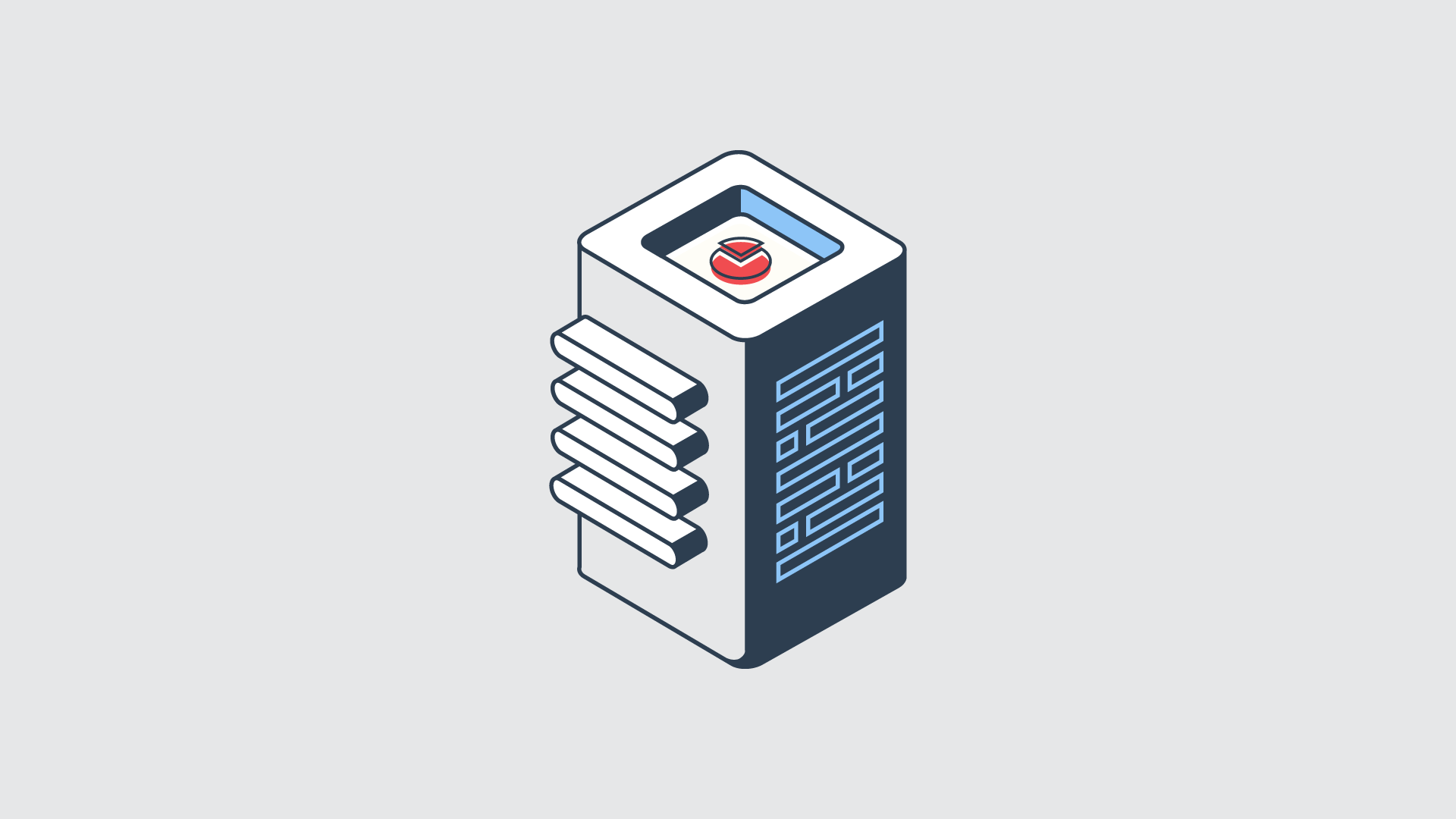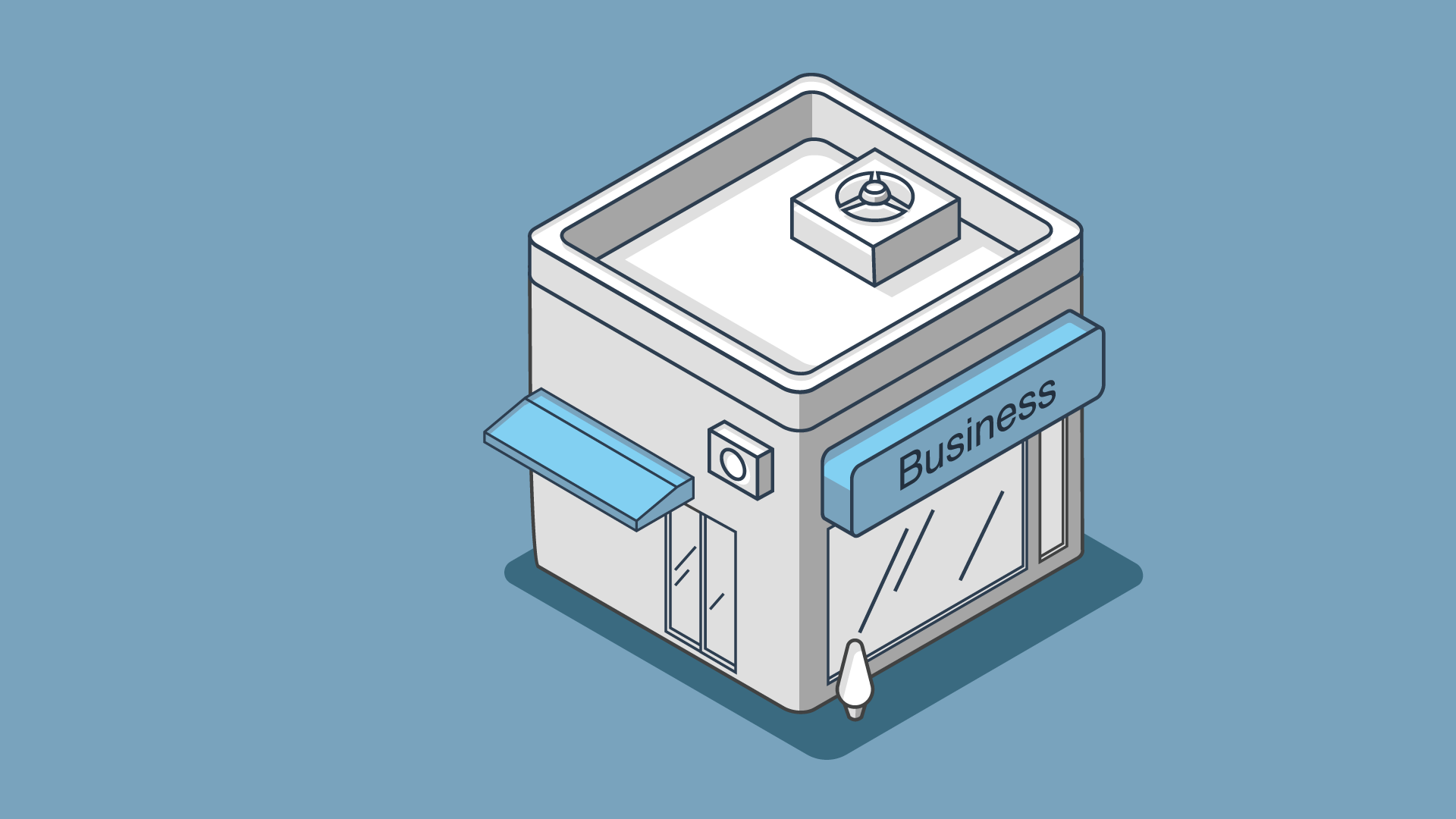Are you tired of spending hours on repetitive marketing tasks? Do you want to streamline your marketing efforts and maximize your results? Marketing automation might be the solution you're looking for.
By leveraging the power of automation, you can streamline your marketing processes, nurture leads, and ultimately, achieve better results.
In today's digital age, businesses are constantly seeking ways to optimize their marketing strategies. According to a report by MarketsandMarkets, the global marketing automation market is projected to reach $9.5 billion by 2027, growing at a CAGR of 12.8% during the forecast period.
This statistic highlights the increasing adoption of marketing automation as businesses recognize its potential to enhance efficiency and drive revenue growth.
But what exactly is marketing automation, and how can you get started with it? This comprehensive guide will provide you with the knowledge and practical steps to embark on your marketing automation journey.
| Marketing automation Marketing automation is a technology that manages marketing processes and multifunctional campaigns, across multiple channels, automatically. |
What is Marketing Automation?
Marketing automation is a game-changer for modern businesses. It allows you to streamline and automate repetitive marketing tasks, such as email campaigns, social media management, lead nurturing, and more.
With marketing automation, you can deliver personalized experiences to your audience at scale, nurture leads through the buyer's journey, and ultimately drive revenue growth.
At its core, marketing automation is powered by advanced software platforms that enable you to design, execute, and analyze your marketing campaigns with ease. These platforms provide a range of features and functionalities, including email marketing automation, lead scoring, behavior tracking, campaign management, and CRM integration.
The Benefits of Marketing Automation
Marketing automation can revolutionize your marketing efforts by streamlining processes, increasing efficiency, and improving overall results. From saving time and resources to enhancing customer engagement and personalization.
In this section, we will explore the benefits of marketing automation and how it can help your business grow and succeed.
1. Time and Resource Savings
By automating repetitive tasks such as email campaigns, lead scoring, and social media posting, you can free up your marketing team's time and allocate it to more strategic initiatives.
According to a report by Nucleus Research, marketing automation drives a 14.5% increase in sales productivity and reduces marketing overhead by an average of 12.2%.
2. Improved Lead Management
Marketing automation allows you to track and manage leads more effectively throughout their journey. You can segment your audience, nurture leads with personalized content, and score them based on their engagement and readiness to make a purchase.
3. Enhanced Personalization
With marketing automation, you can deliver personalized experiences at scale. By leveraging customer data and behavioral triggers, you can send targeted messages tailored to individual preferences, interests, and buying behaviors.
According to Accenture, 91% of consumers are more likely to shop with brands that provide relevant offers and recommendations.
4. Increased Revenue and ROI
Effective marketing automation can drive significant revenue growth. Research by VB Insight reveals that 80% of marketing automation users see an increase in leads, and 77% experience higher conversions.
Key Components of Marketing Automation
To understand marketing automation fully, it's essential to grasp its key components:
Lead Generation: Marketing automation helps you attract and capture leads through various channels such as landing pages, forms, and social media. By automating lead generation processes, you can ensure a steady flow of qualified leads into your sales funnel.
Lead Nurturing: Once leads enter your funnel, marketing automation enables you to nurture them with relevant and timely content. Through automated email campaigns, personalized recommendations, and targeted messaging, you can guide leads through their buyer's journey and increase their engagement with your brand.
Lead Scoring: Marketing automation allows you to assign scores to leads based on their behaviors, demographics, and interactions with your marketing campaigns. Lead scoring helps you identify the most qualified leads and prioritize them for sales engagement, resulting in more efficient and effective sales processes.
Customer Segmentation: With marketing automation, you can segment your audience based on various criteria such as demographics, interests, and purchase history. This segmentation enables you to tailor your marketing messages and campaigns to specific customer segments, increasing relevance and engagement.
Analytics and Reporting: Marketing automation platforms provide robust analytics and reporting capabilities, allowing you to measure the effectiveness of your campaigns, track key metrics, and gain insights into customer behavior. These insights empower you to optimize your marketing strategies and make data-driven decisions.
How to get started with Marketing Automation
Marketing automation can greatly streamline your marketing efforts and help you reach and engage with your target audience more effectively. If you're new to marketing automation and not sure where to start, don't worry - we've got you covered.
We'll walk you through the basics of marketing automation and provide you with some tips on how to get started. So let's dive in and learn how to harness the power of automation to take your marketing to the next level!
1. Defining Your Marketing Automation Goals
Before diving into the world of marketing automation, it's crucial to define clear goals for your automation efforts. Setting specific and measurable goals will guide your strategy and help you measure the success of your marketing automation initiatives.
Start by assessing your current marketing challenges and identifying areas where automation can make a significant impact. Do you want to increase lead generation, improve lead nurturing, enhance customer engagement, or streamline your email marketing campaigns? Each goal will require a tailored approach and a set of specific automation tactics.
Consider using the SMART goal framework to define your objectives. SMART stands for Specific, Measurable, Achievable, Relevant, and Time-bound.
Once you have defined your goals, communicate them clearly with your team and stakeholders. This alignment will help ensure everyone is working towards the same objectives and that there is a shared understanding of how marketing automation will drive business success.
2. Selecting the Right Marketing Automation Software: HubSpot
Now that you have a clear understanding of your marketing automation goals, it's time to choose the right software that aligns with your objectives and supports your automation strategy.
With numerous options available in the market, selecting the right marketing automation software can seem overwhelming. However, by considering a few key factors, you can make an informed decision.
Start by assessing your specific needs and requirements. What functionalities and features are essential for your marketing automation goals? Consider aspects such as email marketing, lead scoring, lead nurturing, CRM integration, analytics, and reporting capabilities.
HubSpot is a popular choice among business professionals, offering a comprehensive suite of marketing automation features that cater to various needs.
Integration capabilities are also crucial when selecting marketing automation software. HubSpot integrates seamlessly with popular CRM platforms and other third-party systems, enabling efficient data sharing and streamlining processes across different departments.
This integration ensures a unified and cohesive approach to marketing automation.
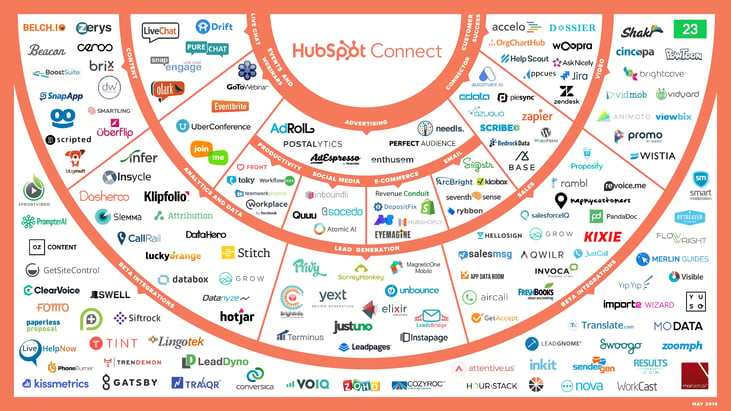
By carefully evaluating these factors and considering HubSpot as your marketing automation software, you can select the right solution that empowers your team, aligns with your goals, and drives successful automation campaigns.
3. Integrating Marketing Automation with CRM: Streamlining Data and Processes
Once you have selected your marketing automation software, the next crucial step is integrating it with your Customer Relationship Management (CRM) system. The integration between marketing automation and CRM is essential for a seamless flow of data, streamlined processes, and improved collaboration between sales and marketing teams.
Integrating marketing automation with your CRM enables you to have a comprehensive view of your contacts and their interactions with your marketing campaigns and sales activities. It allows you to track and analyze customer behavior, lead generation sources, conversion rates, and other key metrics that provide valuable insights into your marketing efforts.
HubSpot offers seamless integration with popular CRM systems like Salesforce, enabling you to sync and update data in real-time. This integration ensures that your marketing and sales teams have access to the most up-to-date and accurate customer information, facilitating more personalized and targeted communication.
4. Building Your Contact Database: Capturing and Organizing Contact Information
A robust contact database is the foundation of successful marketing automation. To leverage the power of marketing automation effectively, you need to build and maintain a comprehensive contact database that includes valuable information about your prospects and customers.
Here are some key steps to help you build and organize your contact database:
1. Capture Contact Information
Start by implementing various strategies to capture contact information from your target audience. This can include website forms, landing pages, newsletter subscriptions, social media lead generation, and offline events.
Make sure to collect essential details such as name, email address, company, and any other relevant information that aligns with your marketing objectives.
2. Segment Your Contacts
Once you have collected contact information, segment your contacts into different categories based on their characteristics, interests, behaviors, or lifecycle stages. This segmentation allows you to tailor your marketing campaigns and communications to specific target audiences, increasing their relevance and effectiveness.
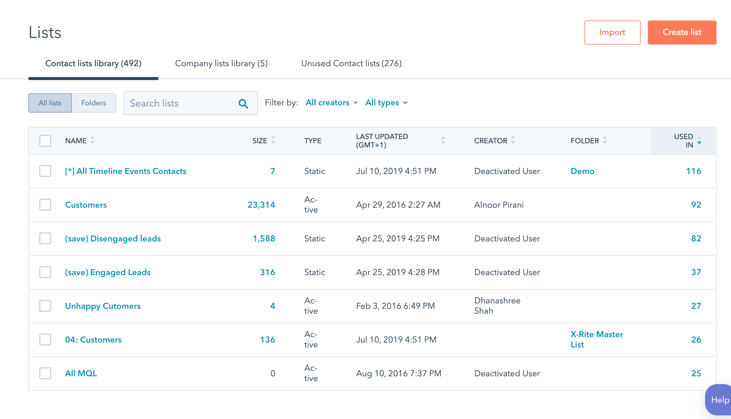
3. Cleanse and Validate Data
Regularly clean and validate your contact data to ensure its accuracy and quality. Remove any duplicate or outdated records, correct any errors or inconsistencies, and update contact information as needed.
Clean data enhances the effectiveness of your marketing automation efforts and prevents unnecessary communication errors.
4. Enhance with Additional Data
Supplement your contact data with additional information that can provide valuable insights for personalization and targeting. This can include demographic data, company details, purchase history, website activity, and interactions with your marketing campaigns.
HubSpot's robust contact management features allow you to enrich contact profiles with relevant data for more effective marketing automation.
5. Leverage Progressive Profiling
Implement progressive profiling techniques to gather additional information from your contacts over time. Instead of overwhelming prospects with lengthy forms, use progressive profiling to collect new data with each interaction.
This gradual approach helps build a more complete profile of your contacts without causing friction or reducing conversion rates.
5. Creating Effective Email Campaigns
Email marketing remains a powerful tool in the marketing automation arsenal. With marketing automation software, you can design, automate, and optimize email campaigns to engage your audience and drive conversions.
Here are key considerations for creating effective email campaigns:
Segmenting Your Contact List
One-size-fits-all emails are no longer effective. Segment your contact list based on criteria such as demographics, interests, behavior, or purchase history.
By sending targeted and personalized emails to specific segments, you can deliver more relevant content and improve engagement rates. According to Campaign Monitor, segmented email campaigns result in a 760% increase in revenue.
Designing Engaging Email Templates
Visual appeal and a user-friendly layout are crucial for email success. Create visually appealing email templates that align with your brand identity and convey your message effectively.
Ensure your emails are mobile-responsive since a significant portion of emails are opened on mobile devices. Incorporate compelling CTAs and clear, concise messaging that prompts recipients to take action.
Automating Email Workflows and Drip Campaigns
Marketing automation allows you to set up automated email workflows and drip campaigns. These campaigns are triggered by specific actions or events, such as website visits, form submissions, or purchases.
With automation, you can nurture leads, onboard new customers, send personalized recommendations, and re-engage inactive subscribers. According to Campaign Monitor, automated email campaigns generate 320% more revenue than non-automated campaigns.
6. Implementing Lead Scoring and Nurturing
Once you have captured leads through your marketing efforts, the next step is to prioritize and nurture them effectively. This is where lead scoring and nurturing come into play.
Lead scoring allows you to assign a value to each lead based on their level of engagement, interests, and fit with your ideal customer profile. Nurturing, on the other hand, involves guiding leads through the buyer's journey by providing relevant content and personalized experiences.
Here's how you can implement lead scoring and nurturing:
Define Lead Scoring Criteria
Start by identifying the key factors that indicate a lead's readiness to make a purchase. This could include their level of engagement with your website, email interactions, social media interactions, and demographic information.
Assign a numerical value to each factor based on its importance. For example, a lead who downloads a product demo may receive a higher score than someone who only visits your blog.
Implement Lead Nurturing Workflows
Once you have scored your leads, it's time to nurture them with targeted and personalized content. Create automated workflows that deliver relevant information based on the lead's score and behavior.
For instance, if a lead has shown interest in a specific product or service, send them educational materials, case studies, or testimonials related to that offering. By providing valuable content tailored to their needs, you can build trust, establish your expertise, and guide them toward a purchase decision.
Align Sales and Marketing Efforts
Effective lead scoring and nurturing require close collaboration between your sales and marketing teams. Define clear handoff criteria for when leads should be passed from marketing to sales.
Establish regular communication channels to share insights, feedback, and updates on lead quality. By aligning your efforts, you can ensure a seamless transition and provide a consistent experience for leads throughout their journey.
Continuously Optimize and refine
Lead scoring and nurturing are not set in stone. Regularly evaluate the effectiveness of your lead scoring criteria and workflows. Monitor conversion rates, customer acquisition costs, and other key metrics to identify areas for improvement.
Adjust your criteria and content strategies as needed to maximize the impact of your lead nurturing efforts.
7. Tracking and Analyzing Campaign Performance
Tracking and analyzing campaign performance is a critical step in optimizing your marketing automation strategy. By measuring key performance indicators (KPIs) and analyzing data, you can gain valuable insights into the effectiveness of your campaigns and make data-driven decisions for improvement.
Here's how you can track and analyze your campaign performance:
Set Up Tracking Mechanisms
Start by implementing tracking mechanisms to capture relevant data. Use UTM parameters and tracking URLs to monitor the performance of your email campaigns, social media posts, and other promotional activities.
Set up conversion tracking to measure the impact of your campaigns on lead generation and sales. Marketing automation software provides built-in tracking features that can help you monitor various metrics, including open rates, click-through rates, conversion rates, and revenue attribution.
Analyze Key Performance Indicators (KPIs)
Identify the KPIs that are most relevant to your marketing goals and track them consistently. Some common KPIs to monitor include lead generation, conversion rates, customer acquisition cost (CAC), customer lifetime value (CLTV), and return on investment (ROI).
Analyzing these metrics allows you to identify trends, spot areas of improvement, and make data-backed decisions to optimize your campaigns.
Iteratively Optimize Campaigns
Use the insights gathered from tracking and analyzing to refine and optimize your marketing automation campaigns. Identify underperforming areas and experiment with different approaches, such as changing email subject lines, adjusting content offers, or optimizing landing pages.
Conduct A/B tests to compare different variations and determine which elements yield the best results. Continuously refine your campaigns based on data-driven insights to enhance engagement, conversion rates, and overall campaign effectiveness.
8. Personalization and Dynamic Content
Personalization and dynamic content are key elements of a successful marketing automation strategy. By tailoring your marketing messages to individual customers and delivering relevant content, you can significantly improve engagement and conversion rates.
Here's how you can leverage personalization and dynamic content in your marketing automation efforts:
Leverage Customer Data
Utilize the customer data you have collected to personalize your marketing messages. Segment your contact list based on demographics, behavior, preferences, and past interactions.
This allows you to send targeted and relevant content to specific segments, increasing the likelihood of engagement and conversion.
Implement Dynamic Content
Dynamic content allows you to deliver personalized experiences on a larger scale. By dynamically adapting the content of your emails, landing pages, and website based on individual customer attributes, you can create more engaging and relevant experiences.
For example, you can display product recommendations based on a customer's browsing history or show location-specific offers. Dynamic content ensures that each customer receives a tailored experience, increasing their engagement and driving conversions.
Enhance Customer Engagement
Personalization and dynamic content not only increase the likelihood of conversion but also improve overall customer engagement.
When customers receive content that is specifically tailored to their needs and interests, they are more likely to interact with your brand, provide feedback, and become loyal advocates. By nurturing these engaged customers through targeted communication, you can build stronger relationships and drive long-term customer loyalty.
9. Continuous Improvement and Testing
Continuous improvement and testing are essential components of a successful marketing automation strategy. By regularly analyzing your campaigns, making data-driven adjustments, and testing new approaches, you can optimize your marketing automation efforts and achieve better results.
Here are key steps to implement continuous improvement and testing:
Conduct A/B Testing
A/B testing involves creating two versions (A and B) of an element in your campaign, such as an email subject line or call-to-action. Send each version to a segment of your audience and measure the performance.
By comparing the results, you can identify which variation performs better and make data-driven decisions to improve your campaigns. A/B testing helps you optimize your marketing automation efforts and maximize your conversion rates.
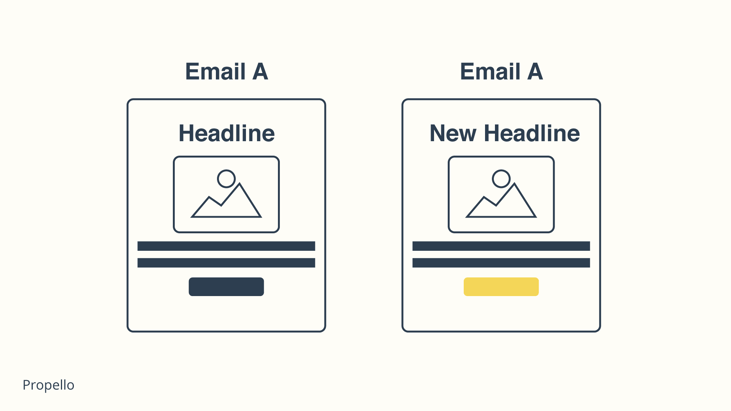
Iterate and Refine
Based on the insights gained from A/B testing and data analysis, iterate and refine your marketing automation strategies. Make adjustments to your email content, landing pages, workflows, and segmentation to enhance their effectiveness.
Continuously monitor the performance of your campaigns and adapt them accordingly. Remember, optimization is an ongoing process, and small improvements can lead to significant gains over time.
Embrace Innovation
Stay updated with the latest trends and innovations in marketing automation. Explore new features and capabilities offered by your automation software and industry best practices.
Keep an eye on emerging technologies, such as AI-driven personalization or chatbot integrations, that can enhance your automation efforts. Embracing innovation allows you to stay ahead of the competition and deliver cutting-edge experiences to your audience.
Analyze Key Metrics
Regularly analyze key metrics and performance indicators to assess the effectiveness of your marketing automation campaigns.
Track metrics such as open rates, click-through rates, conversion rates, and ROI. Identify patterns, trends, and areas for improvement. Use the insights gained from data analysis to make informed decisions and optimize your strategies for better results.
10. Training and Collaboration
Training and collaboration play a crucial role in maximizing the benefits of marketing automation for your organization.
By providing proper training on marketing automation tools and processes, and fostering collaboration between marketing and sales teams, you can enhance the effectiveness and efficiency of your marketing automation strategy.
Here are key steps to implement training and collaboration:
Provide Training and Education
Ensure that your marketing and sales teams receive comprehensive training on the marketing automation software and tools you are using. Train them on how to navigate the platform, create campaigns, segment contacts, and interpret campaign analytics.
Additionally, educate them on best practices for lead nurturing, email marketing, and automation workflows. By equipping your teams with the necessary knowledge and skills, you empower them to effectively leverage marketing automation in their day-to-day activities.
Foster Collaboration
Encourage collaboration between your marketing and sales teams to align their efforts and maximize the impact of marketing automation. Facilitate regular communication and meetings to share insights, discuss campaign performance, and exchange feedback.
Foster a culture of collaboration and encourage cross-functional teamwork. When marketing and sales work together closely, they can better understand customer needs, align their messaging, and effectively nurture leads through the sales funnel.
Align Goals and Metrics
Establish clear goals and metrics that both marketing and sales teams can work towards. This alignment ensures that everyone is on the same page and working towards common objectives.
For example, align the definition of a qualified lead and establish a shared understanding of the lead handoff process. Regularly track and review key performance indicators (KPIs) that measure the success of marketing automation efforts, such as lead conversion rates, sales revenue attributed to marketing campaigns, and customer retention rates.
Encourage Feedback and Continuous Learning
Create a feedback loop where marketing and sales teams can provide input and suggestions for improving the marketing automation strategy. Encourage open dialogue and an environment where everyone feels comfortable sharing their ideas and insights.
Additionally, stay updated with industry trends and new features in marketing automation software. Continuously invest in learning and development opportunities for your teams to enhance their skills and stay ahead of the curve.
11. Compliance and Data Security
When implementing a marketing automation strategy, it is crucial to prioritize compliance with data protection regulations and ensure the security of customer information. Safeguarding data privacy and maintaining trust with your audience is paramount.
Here are important considerations for compliance and data security:
Ensure Compliance with Data Protection Regulations
Familiarize yourself with the relevant data protection regulations in your region, such as the General Data Protection Regulation (GDPR) in the European Union or the California Consumer Privacy Act (CCPA) in the United States.
Understand your obligations as a data controller and processor, and ensure that your marketing automation practices align with these regulations. Seek legal counsel if needed to ensure full compliance.
Obtain Consent and Provide Transparency
Obtain proper consent from individuals before collecting their data and using it for marketing purposes. Communicate how their data will be used and provide options for them to manage their preferences.
Implement robust data governance practices to maintain accurate and up-to-date records and allow individuals to easily access, modify, or delete their data if requested.
Implement Security Measures
Protecting customer data from unauthorized access or breaches is vital. Implement security measures to safeguard data integrity and confidentiality. This may include encryption of sensitive information, secure data storage, regular system backups, and robust access controls.
Stay up to date with security best practices and consider conducting regular security audits or engaging third-party experts for assessments.
Regularly Audit and Update Privacy Policies
Regularly review and update your privacy policies to reflect changes in regulations and your marketing automation practices.
Ensure that your privacy policies are transparent, easily accessible, and clearly state how customer data is handled. Communicate any updates to your audience and provide mechanisms for them to ask questions or provide feedback.
Data Retention and Disposal
Establish policies and procedures for data retention and disposal. Determine how long you will retain customer data and ensure compliance with applicable regulations. Implement proper procedures for securely disposing of data when it is no longer needed or requested for deletion.
Embrace the Transformative Power of Marketing Automation
In conclusion, marketing automation offers immense opportunities for businesses to streamline processes, improve efficiency, and drive revenue growth. To get the most out of marketing automatization and ROI, you must gain insight into your analytics reports and adjust your campaign strategy accordingly.
Automated marketing helps you automate repetitive, tedious processes and track the behavior of your leads so you can better serve them. It also allows you to scale your efforts and reach more potential clients.
Ready to harness the power of marketing automation for your business? Contact Fine Media and let our team of experts guide you in implementing a tailored marketing automation strategy that drives meaningful results. Together, we can take your business to new heights with the transformative power of automation.
